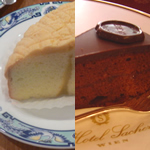
Considering the bare bones of good communication might include such concepts as; accuracy, relevancy, timeliness, conciseness, and enough context so everyone can understand the message – adding richness doesn’t seem all that necessary.
Nor is ‘richness’ easy to define. So what do rich communications look like and what are the benefits?
I’m proposing that even if our communication is accurate, relevant, timely and well written, it can still be improved and our impact increased by ensuring that we create rich messages that have emotional meaning. Accurate, relevant communications don’t always have any emotional facet, so it’s only by adding richness that we can really engage with how people feel and then behave.
Rich writing – A definition
I think definitions can be fluid and dependent on the context, so I’m not going to define rich communication in any concrete sense.
Richness is about offering more, giving more. We don’t need a leaf of mint on our chocolate mouse but we like the garnish and devour the dessert with our eyes before we even taste it. Don’t do away with the garnish just because you consider it meaningless and without function – it has a function – just ask any successful chef.
Rich communications offer more than the bare bones necessary for action.
Rich communications provide emotional and intellectual stimulation.
You’ll notice that when people speak, especially for an audience, they use rich metaphors and even hyperbole – they don’t cut all their language down and just issue orders and direction. Good speakers engage their audience’s emotions and imaginations. Our communications should do the same.
Rich examples
When publishing to your intranet or website, or even when sending round management cascades and PowerPoint files, ensure your communications are ‘good enough’ and include the bare bones:
- accurate;
- relevant;
- timely;
- concise;
- contextual;
- rich.
To get richness into your writing, try some of the following.
Use images, regardless of the medium you’re using. Yes, even Word documents can benefit from illustrative images. Grab your readers by the eye-balls
Photographs and imagery creates an emotional link to the reader, and should also clarify the point of your message. Articles with photos get clicked on and read more than articles without, that’s a fact. Put some effort in, get images into your communications, your constituents deserve more than paragraphs.
Have your text flow-around your images for added structure. Change the layout of your commnications ever so often, don’t let people tire of the way you do thing.
Provide links. You may feel you’ve given enough context, but there are always curious people who need more, and their personal understanding and research can yield tremendous results, so don’t stifle people’s desire for more.
Whenever you mention a person or a company, link to their profile or professional website. When you discuss previous articles or themes, link back to their intranet pages. When you highlight your company’s aims and objectives, link to them! Basically, use the hypertext medium as it was designed – to spin a web of easily accessible information.
Provide all the contact details necessary to get people involved with your comms – you may feel that the ‘address book’ is easy enough to use but why make your audience work? Give them your phone book and email address!
Use imagery, in a literary sense I mean! Beyond the whole ‘a picture is worth a thousand words’ thing, good words are worth a thousand bad ones! Write with eloquence while remaining concise and understandable. Add examples, metaphors, similes and real-life stories to illustrate your news or message.
Don’t destroy the meaning of your message by resorting to jargon, acronyms and abbreviations – always explain such matters.
Date your article, and date when any changes are to take place in the future. Without clear dates, people can believe your article is ‘news’ even when it’s a year old…
Bare bones good comms
Would you like to discuss my six ideas for good comms? Please contact me or call 07950705258 during UK daylight hours. I would welcome your comments below of course.
[Wedge]




This whole series has been very helpful and I will be sure to refer back to it next time I’m writing for FirstSigns.
I know it’s aimed at professional communicators, but I’ll be bearing all your useful tips and advice in mind when writing on a personal level too. I really do have a problem with being concise – so I might even bookmark that one!
Thank you.